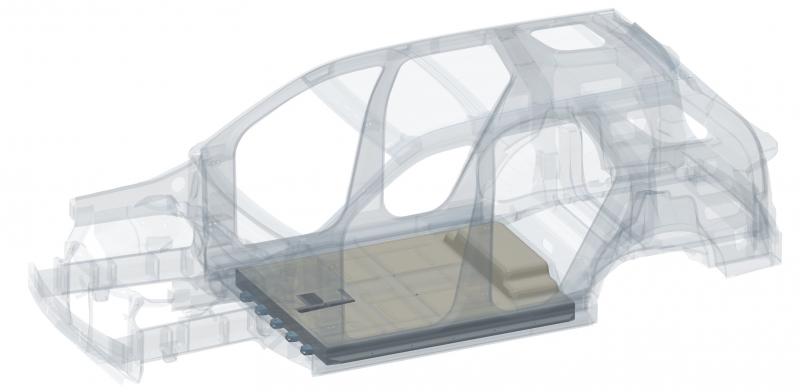Products
Product pages available in
EN - DE - FR - ES
Sustainability
News, events and stories

E-mobility needs smart steel solutions
For the transition to electric vehicles to be fully successful, carmakers must increase efforts to extend range, reduce cost, and enhance safety. A new S-in motion® study from ArcelorMittal reveals that advanced high strength steels (AHSS) solutions are the best choice to achieve this revolution in mobility at an affordable cost. The first part of this study focuses on battery pack solutions.
Battery pack structure and weight critical for BEVs
Battery electric vehicles (BEVs) are equipped with large batteries to ensure the vehicle driving range expected by consumers. For OEMs, key concerns are the financial costs of EVs that could limit how quickly sales will take off. Another challenge for EV-makers has been the weight of the battery and the extra reinforcement needed to protect it during a crash event – this can add up to 500kg.
ArcelorMittal’s most recent S-in motion® BEV study shows that advanced high-strength steels (AHSS) can answer many of these concerns. The study examined the battery pack, which houses the battery cells and their equipment.
The battery pack is one of the most vital parts of an EV. As well as protecting the battery and its equipment from external elements, it must keep the vehicle and its passengers safe from battery leakage, fumes, fire, and electromagnetic fields.
The S-in motion® examination of the battery pack demonstrated this by simulating some of the most severe load cases, such as underfloor intrusion, pole crush and drop tests. The high mechanical properties of ArcelorMittal’s MartINsite® 1500 steel grade exhibited excellent results in these tests when combined with an appropriate design. The MartINsite® grade was able to resist high load-deformation due to its very high yield strength of more than 1200 MPa. The three main sub-modules (upper cross member, frame and lower shield) were found to benefit from this steel grade.
Exploded view of ArcelorMittal's main S-in motion concept for battery pack structure
The main sub modules are numbered from 1 to 6 and are detailded in table below:

| Part | Name | Thickness (mm) | Steel grade | Yield strength** (MPa) | Ultimate tensile strength** (MPa) | Total elongation** (%) |
|---|---|---|---|---|---|---|
| 1 | Top cover | 0.6 | HSLA300 | 300 | 350 | > 26 |
| 2a | Upper X-member longitudinal | 2.0 | MartlNsite® 1500 | 1200 | 1500 | > 3 |
| 2b | Upper X-member lateral | 1.2 | MartlNsite® 1500 | 1200 | 1500 | > 3 |
| 3 | Cladded cooling system | 1.0* | HSLA300 | 300 | 350 | > 26 |
| 4 | Frame | 2.0 | MartlNsite® 1500 | 1200 | 1500 | > 3 |
| 5 | Brackets to BIW | 2.5 | HR CP800 | 680 | 800 | > 10 |
| 6a | Lower X-members | 0.7 | DP780Y450 | 450 | 780 | > 15 |
| 6b | Lower shield | 1.35 | MartlNsite® 1500 | 1200 | 1500 | > 3 |
* Thickness as a result of assembly constraints
** Minimum values shown – more detail in ArcelorMittal Global Automotive online product catalogue
Modular all-steel battery pack solutions
The S-in motion® Battery Pack study includes several best-in-class and customizable battery pack solutions. Each showcases the ability of AHSS to meet structural requirements while providing attractive weight and cost benefits. The overall weight of the lightest battery pack concept is 107 kg on the basis of a C-segment vehicle. With 60 kWh energy, the car has a driving range of 460 km with current energy densities available on the market.
When the battery and equipment are included, the overall weight of the battery pack is 427 kg. This all-steel solution can match the weight of a battery pack already on the road and provide a comparable level of energy, but at a much lower cost.
The ArcelorMittal battery pack design is modular. It has been easily adapted to a SUV vehicle architecture within the S-in motion BEV full vehicle project.
-
BEV: side view
-
BEV: under view
Watch our webinar about S-in motion® solutions for battery pack
Want to know more about our solutions for battery packs? Watch this webinar to hear our experts explain why steel solutions for battery pack enable carmakers to extend range, reduce cost, and enhance safety at the most affordable cost.








